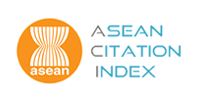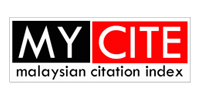Investigating Twist Drill Design Influence on Thrust Force and Surface Roughness in Drilling AFRP/ Al7075-T6 Stacks Materials
DOI:
https://doi.org/10.58915/ijneam.v17iJune.865Keywords:
Twist drill design, Hole surface roughness, Thrust force, Stack-up materialAbstract
Drilling Aramid Fiber-Reinforced Plastic (AFRP) presents unique challenges when compared to drilling other composite panels. These difficulties arise from the high-toughness characteristics of aramid fibers, which exhibit a tendency for ductile deformation during the drilling process. This research explores the influence of drill bit design on the drilling process stack-up materials, which comprise Aramid Fiber Reinforced Plastic Composite Laminates (AFRP) and Aluminum Al7075-T6. Three distinct bit designs were employed in the experiment, conducted on a Computer Numerical Control (CNC) machine operating at a spindle speed of 2000 rev/min and a feed rate of 0.05 mm/rev. To measure thrust force during drilling, a dynamometer was integrated into the setup. Subsequently, a roughness tester was utilized to assess the hole surface roughness of the stack-up materials. For AFRP materials, the w-point drill design emerged as the optimal choice, reducing thrust force by approximately 5% to 13% compared to other drill bit designs. Conversely, for Al7075-T6 panels, the tapered web drill design demonstrated exceptional results, lowering thrust force by approximately 21% and 50% in comparison to burnishing and w-point drill bits, respectively. In terms of hole surface roughness, the burnishing drill type consistently produced the smoothest surfaces, boasting significant improvements of 44% and 82% when compared to the tapered web and w-point drill bits for AFRP panels. Similarly, for Al7075-T6 panels, the burnishing drill type consistently outperformed the tapered web and w-point drill bits by 74% and 88%, respectively, in achieving a superior hole surface finish. These findings underscore the critical importance of selecting the appropriate drill bit design to optimize thrust force reduction and hole surface quality when working with stack-up materials.

















